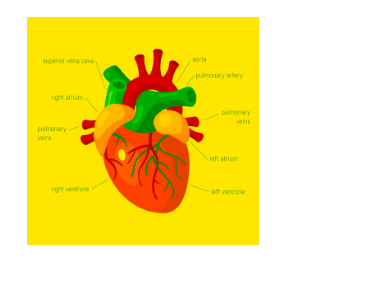Quick Overview
The posterior interventricular artery (PIVA), also known as posterior descending artery (PDA), is a branch of the right coronary artery and a critical component of the heart’s circulatory system.
It supplies blood to the posterior two-thirds of the interventricular septum and the inferior wall of the left ventricle. The PIVA is an important artery, as a blockage in this artery can lead to a heart attack.

Table of Contents
Anatomy of Posterior Interventricular Artery
The posterior interventricular artery (PIVA) originates from the right coronary artery, just below the aortic valve. It then descends along the posterior interventricular groove, where it gives off branches to the septum and the inferior wall of the left ventricle. The PIVA terminates at the apex of the heart, where it meets the left anterior descending artery.
| Artery | Description |
| Origin | Right coronary artery (almost 70% people) |
| Branches | Septal perforator branches, Inferior diaphragmatic branches, Posterior left ventricular branches |
| Supply | posterior two-thirds of the interventricular septum, inferior wall of the left ventricle, posterior wall of the left ventricle. |
Branches and Distribution
The PIVA has several branches, including:
- Septal perforator branches: These branches supply blood to the posterior two-thirds of the interventricular septum.
- Inferior diaphragmatic branches: These branches supply blood to the inferior wall of the left ventricle.
- Posterior left ventricular branches: These branches supply blood to the posterior wall of the left ventricle.
Location:
The PIA’s located within the heart, specifically in the posterior interventricular sulcus, which is the groove that runs along the heart’s back surface between the two ventricles.
Function
The main function of PIVA is to supply blood to the posterior two-thirds of the interventricular septum and the inferior wall of the left ventricle. The interventricular septum is the wall that separates the left ventricle from the right ventricle. The left ventricle is the main pumping chamber of the heart.
Clinical Significance
The PIVA is an important artery, as a blockage in this artery can lead to a heart attack. A heart attack occurs when the blood supply to a part of the heart is blocked which can damage or destroy the heart muscle.
Nerve Supply and Blood Supply:
The PIA, like other coronary arteries, does not have a distinct nerve supply, but it benefits from the autonomic nervous system’s regulation of coronary blood flow. Its blood supply comes from the right coronary artery (in most cases) or the left circumflex artery.
Common Conditions and Issues
The most common condition that affects the PIVA is coronary artery disease. Coronary artery disease is a condition in which the arteries that supply blood to the heart are narrowed or blocked. This can reduce the blood flow to the heart muscle and lead to a heart attack.
Other conditions that can affect the PIVA include:
1- Angina pectoris: Angina pectoris is chest pain that occurs when the heart muscle is not getting enough blood.
2- Cardiomyopathy: Cardiomyopathy is a condition in which the heart muscle is weakened or enlarged.
3- Myocarditis: Myocarditis is an inflammation of the heart muscle.
4- Endocarditis: Endocarditis is an infection of the inner lining of the heart.
Diagnosis and Treatment
The PIVA can be visualized using a variety of imaging tests, including:
- Coronary angiography: Coronary angiography is a procedure that uses X-rays and a dye to visualize the coronary arteries.
- Echocardiogram: An echocardiogram is a type of ultrasound that can be used to visualize the heart.
- Cardiac magnetic resonance imaging (MRI): Cardiac MRI is a type of MRI that can be used to visualize the heart and its surrounding structures.
Questions
1. Where is the Posterior Interventricular Artery located?
The Posterior Interventricular Artery is located on the posterior surface of the heart within the posterior interventricular sulcus, which is a groove that runs along the heart’s back surface between the two ventricles.
2. The Posterior Interventricular Artery branches off which artery?
The Posterior Interventricular Artery typically branches off from the Right Coronary Artery (RCA). However, in some individuals, it can also originate from the Left Circumflex Artery (LCx).
3. What is the function of the Posterior Interventricular Artery?
The primary function of the Posterior Interventricular Artery is to supply oxygenated blood to the posterior part of the heart, including the ventricles. It plays a crucial role in ensuring that the heart receives an adequate blood supply, contributing to the heart’s overall pumping function.
4. What is the Posterior Interventricular Artery also called?
The Posterior Interventricular Artery is also known as the “Posterior Descending Artery” due to its location and distribution along the posterior surface of the heart.
